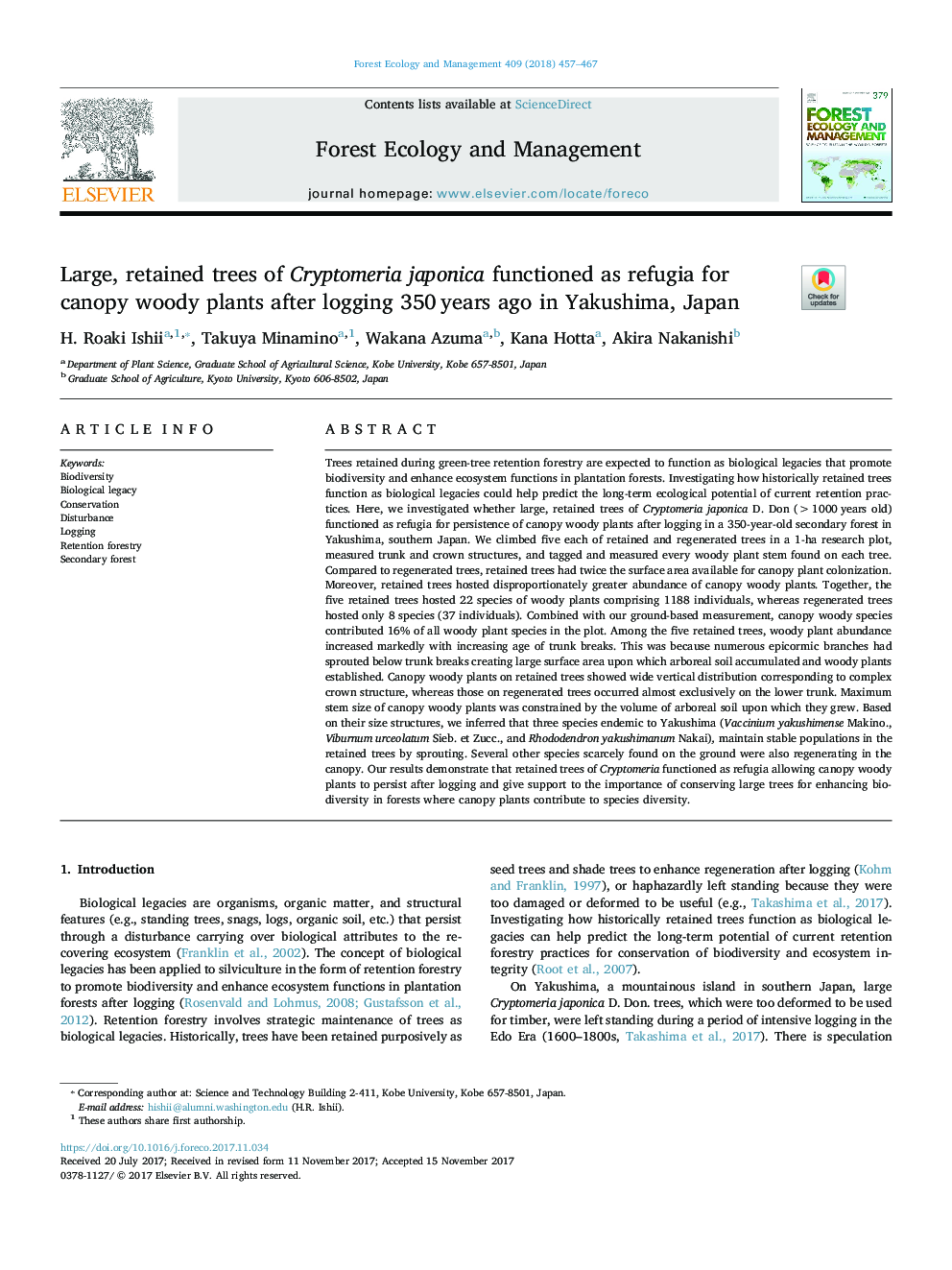| Article ID | Journal | Published Year | Pages | File Type |
|---|---|---|---|---|
| 6541932 | Forest Ecology and Management | 2018 | 11 Pages |
Abstract
Trees retained during green-tree retention forestry are expected to function as biological legacies that promote biodiversity and enhance ecosystem functions in plantation forests. Investigating how historically retained trees function as biological legacies could help predict the long-term ecological potential of current retention practices. Here, we investigated whether large, retained trees of Cryptomeria japonica D. Don (>1000â¯years old) functioned as refugia for persistence of canopy woody plants after logging in a 350-year-old secondary forest in Yakushima, southern Japan. We climbed five each of retained and regenerated trees in a 1-ha research plot, measured trunk and crown structures, and tagged and measured every woody plant stem found on each tree. Compared to regenerated trees, retained trees had twice the surface area available for canopy plant colonization. Moreover, retained trees hosted disproportionately greater abundance of canopy woody plants. Together, the five retained trees hosted 22 species of woody plants comprising 1188 individuals, whereas regenerated trees hosted only 8 species (37 individuals). Combined with our ground-based measurement, canopy woody species contributed 16% of all woody plant species in the plot. Among the five retained trees, woody plant abundance increased markedly with increasing age of trunk breaks. This was because numerous epicormic branches had sprouted below trunk breaks creating large surface area upon which arboreal soil accumulated and woody plants established. Canopy woody plants on retained trees showed wide vertical distribution corresponding to complex crown structure, whereas those on regenerated trees occurred almost exclusively on the lower trunk. Maximum stem size of canopy woody plants was constrained by the volume of arboreal soil upon which they grew. Based on their size structures, we inferred that three species endemic to Yakushima (Vaccinium yakushimense Makino., Viburnum urceolatum Sieb. et Zucc., and Rhododendron yakushimanum Nakai), maintain stable populations in the retained trees by sprouting. Several other species scarcely found on the ground were also regenerating in the canopy. Our results demonstrate that retained trees of Cryptomeria functioned as refugia allowing canopy woody plants to persist after logging and give support to the importance of conserving large trees for enhancing biodiversity in forests where canopy plants contribute to species diversity.
Keywords
Related Topics
Life Sciences
Agricultural and Biological Sciences
Ecology, Evolution, Behavior and Systematics
Authors
H. Roaki Ishii, Takuya Minamino, Wakana Azuma, Kana Hotta, Akira Nakanishi,
